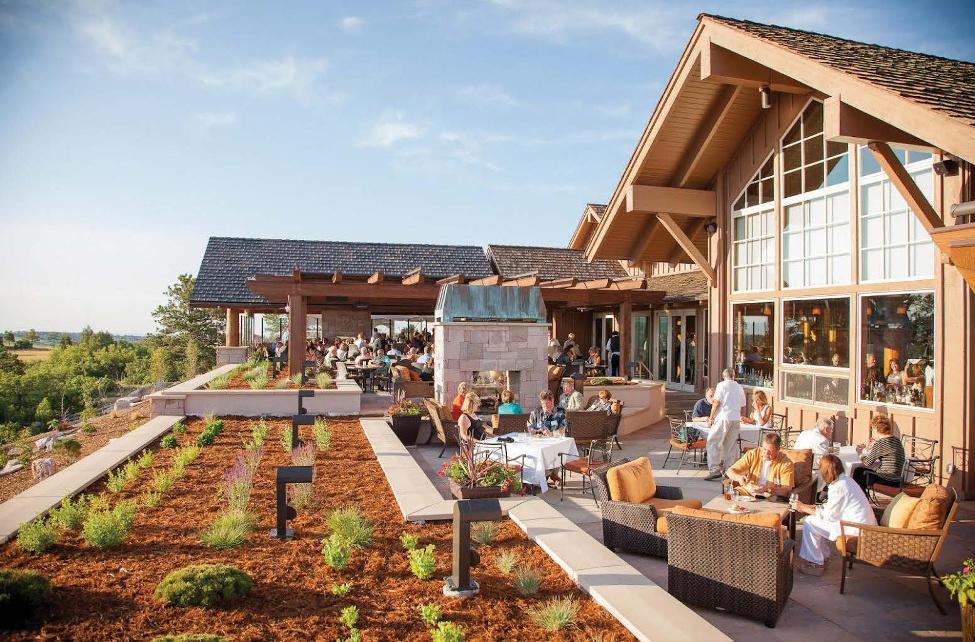
4 minute read
Concrete Tile Roof Caps Renovation
by IdeaSoil
Washington Fruit & Produce Co. Headquarters Details
GRAHAM BABA ARCHITECTS TEAM • Brett Baba, design principal • Hill Pierce, project architect • Jenn LaFreniere, project manager
Advertisement
DESIGN TEAM
Graham Baba Architects (architecture and interior design), Seattle
IMA Wright LLC (structural engineer), Seattle
ARUP (M/E/P/fi re protection engineer), Seattle
The Berger Partnership (landscape architect), Seattle
Brian Hood Lighting (lighting designer), Seattle
Premier SIPS (structurally insulated panel roof),
Puyallup, WA
Selkirk Timberwrights (glulam), Priest River, ID
Pacifi c Window Systems (glazing), Kent, WA
Stusser Woodworks (custom furniture fabrication & white oak paneling), Woodinville, WA
Spartan, daylight-fi lled interiors at Washington Fruit headquarters are complemented by a warm, simple palette of natural materials. Interior furnishings terminate well below the ceiling. The open feeling of the structure is reinforced by keeping furnishings low and allowing them to fl oat within the space.
Want more information? To download the information listed below, visit commercialarchitecturemagazine.com/ 1710graham
See more photos of Cowiche Canyon.
View more photos of Washington Fruit.
Visit Graham Baba’s website. form a central, landscaped courtyard. Soil excavated for foundation work was repurposed for the perimeter berms, eliminating the need to remove it or add more.
A notch through the berm provides access from the parking area to the formal courtyard and building entrance. Crossing the courtyard on a boardwalk, the visitor is embraced by a fully glazed facade, punctuated by a series of wood columns that march across the building in regular intervals. The boardwalk aligns with an off-set building entry, which is formed as a wood-wrapped passageway inserted into the glazed facade.
The building recalls its agricultural roots by pulling the 18-ft.-tall scissored glulam structural columns to the outside, revealing the physics of its construction and enabling the 175-ft.-long interior volume to be column free. Topped with 68-ft.-long exposed truss girders, the interior reaches 20 ft. at its peak. The repetitive nature of the structure ensured easy fabrication and assembly, saving costs and resources.
The north-facing courtyard facade is glazed along its length, visually extending the interior space into the courtyard. Interior light is balanced by a long clerestory dormer on the south, while the extensive use of large, south-facing overhangs and high-efficiency glazing limits summer heat gain. Reclaimed barnwood siding and a weathering steel roof round out the exterior materials.
Spartan, daylight-filled interiors are complemented by a warm, simple palette of natural materials. Private offices line the south wall, while conference spaces and back-ofhouse functions are set in wood-clad boxes. Interior furnishings terminate well below the ceiling. The open feeling of the structure is reinforced by keeping furnishings low and allowing them to float within the space. Lighting consists of custom-designed uplights, which keep the ceiling plane tidy. A raised flooring system further ensures that the clean aesthetic is preserved and free of cabling. The deep agricultural roots of the company and location underlie the simple design concept and attention to detail throughout the project.
The sales office is located in the short arm of the L to isolate noise and enhance privacy. Adjacent to the sales office is a separately enclosed structure featuring a 30-ft.- long table where farmers with whom the company works gather for communal meals. The exposed structural system connecting the lunchroom to the main building creates a small, partially covered courtyard, nodding to a remnant of an aging barn.
Views throughout the thirty-acre complex are controlled, whether to the courtyard, the distant hills, or to the shallow private office views created between the building and the berms. Everything is curated to create a peaceful environment in which to work. CA
Concrete-Tile Roof Caps Renovation
Extensive renovation of the golf course and clubhouse at Castle Pines included replacing the wood-shake roofing with weather-resistant concrete tile.
“ A person can play The Country Club at Castle Pines and feel he’s had a great time no matter what his score, simply because of the views.”
That’s a direct quote from golf legend Jack Nicklaus on playing the course. He should know. Just 30 minutes south of downtown Denver, Castle Pines is a golfer’s paradise boasting a signature course designed by Nicklaus himself, along with a luxury clubhouse. The facilities are set within the prestigious Castle Pines community amidst rugged, picturesque mountain terrain.
The Clubhouse at Castle Pines originally opened to members in 1993. Having recently undergone a robust $5-million renovation, the facility delivers a classic, rustic, yet upscale atmosphere. Luxe wood adorns the ceilings and mountain-inspired furnishings and natural light fills the space. Commanding windows naturally draw one’s gaze to unparalleled panoramic views of the surrounding mountain range and signature course. In addition to the interior overhaul, the addition of a gorgeous 6,000-sq.-ft. outdoor terrace now allows guests to dine and socialize comfortably in the enviable setting.
When the extensive renovation neared its completion, it was decided that a new roof was also needed. The existing roof, made of wood shakes, had not only aged but was highly susceptible to fire and hail—two major concerns in Colorado’s environment.
Denver-based Eco Roof and Solar, a wellknown roofing-contractor firm, was selected to oversee the re-roofing project. “Improve


Top. The concrete-tile roof used on the Clubhouse at Castle Pines is designed to complement the surrounding Colorado environment.
Right. The sustainable concrete tile roofing material resists the hail, fire, snow, and wind that is experienced in mountainous terrain surrounding Denver.









